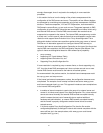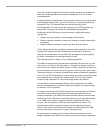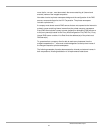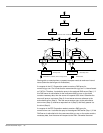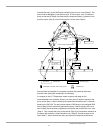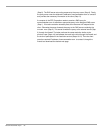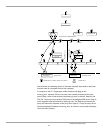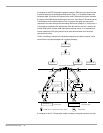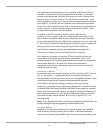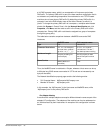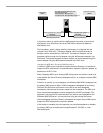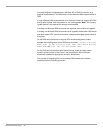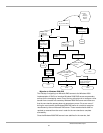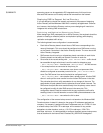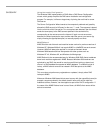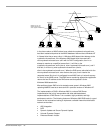
First it finds that the name myname.zzz.com. is internal, based on the PAC file.
Therefore, it submits a query to the assigned DNS server (Step 1). If the cache
contains the necessary data, the server will respond to the client. Otherwise, the
server will query a root server (Step 2). The root server that contains the “.” zone
finds a delegation to the zzz.com. zone and returns a reference to the authoritative
server (Step 3). The server uses the IP address of the name server that contains
the zzz.com. zone to submit the query (Step 4). Since that server is authoritative for
myname.zzz.com., it resolves the query and returns the answer (Step 5). Finally,
the server returns response to the client (Step 6).
A computer in the ZZZ Corporation needs to resolve a DNS query for
myname.yyy.com. It submits a query to the assigned DNS server (Step 1). If its
cache contains the necessary data, the server responds to the client. Otherwise,
the server forwards the query to the DNS server containing the zzz.com. zone (Step
2). Since this server contains a secondary copy of the zone yyy.com. it resolves the
query and returns it to the client through the previous server (Steps 3-4).
Each of the two suggested solutions has disadvantages associated with it.
The solution of company YYY requires maintenance of the PAC file.
At the same time, the solution of company ZZZ puts a significant load on the
internal DNS servers containing top-level private namespace zones. This is
because the majority of the queries generated within the company are forwarded to
these servers. Moreover, in the case of the same internal and external
namespaces, these servers contain larger zones, since they must contain both
internal and external names.
Characters in Names
As mentioned above, the standard characters for DNS, according to RFC 1123, are
A-Z, a-z, 0-9 and the -. In organizations that have an extensive investment in
Microsoft NetBIOS technology, the names conform to the NetBIOS standard. These
organizations should seriously consider moving towards DNS standard.
The process of adjusting your naming conventions may prove to be time
consuming. In an attempt to ease migration from Windows NT 4.0 NetBIOS names
to Windows 2000 DNS names, Windows 2000 DNS includes support for extended
ASCII and Unicode characters. However, the support for additional characters can
only be taken advantage of in a pure Windows 2000-based network environment,
since most third party resolver software, such as Unix or Apple is RFC 1123
standards-based.
Note: If a non-standard DNS name is entered during Windows 2000 DNS setup, the
warning message will appear suggesting the standard DNS name.
Computer Names
Windows NT 4.0 and previous versions of the operating system use a NetBIOS
name to identify a particular machine on the network. A Windows 2000-based
machine can be identified by a NetBIOS name (for down-level interoperability), and
Windows 2000 White Paper
55



